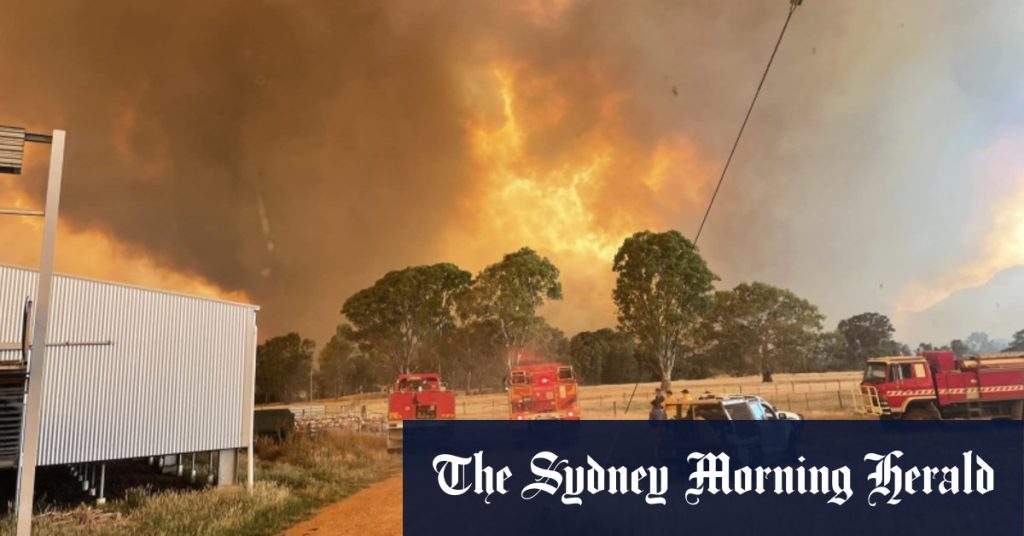Victoria braces for extreme fire danger on Boxing Day, prompting a statewide total fire ban and heightened concerns about the existing Grampians bushfire and the potential for new ignitions. The combination of forecast scorching temperatures, powerful winds, and dry conditions has created a volatile environment conducive to rapid fire spread. Authorities are particularly worried about the Grampians fire, where strong westerly winds are expected to exacerbate the situation. The extreme fire danger rating applies to all districts except East Gippsland, underscoring the widespread risk across the state. More than 100 interstate firefighters are being deployed to Victoria to bolster firefighting resources and assist in containing any outbreaks. Emergency services have utilized the calmer weather conditions leading up to Boxing Day to implement preventative measures, including back-burning and establishing fire breaks, in preparation for the escalating fire risk.
The severity of the forecast conditions is evident in the predicted temperatures. Melbourne is expected to reach a high of 40 degrees Celsius in some suburbs before a cool change arrives in the evening. Areas near the Grampians fire, including Halls Gap, Stawell, and Ararat, are forecast to experience highs of 32 and 37 degrees Celsius respectively. A severe weather warning for damaging winds, with gusts potentially reaching 100 km/h, has been issued for much of western Victoria, further amplifying the fire danger. These strong winds are expected to significantly accelerate the spread of any existing or new fires, making them extremely difficult to control. The Bureau of Meteorology has expressed serious concern about the impact of the hot, dry, and windy conditions, particularly on the Grampians fire.
Authorities are urging Victorians to take precautions and remain vigilant. Residents are advised to stay informed about emergency warnings, avoid unnecessary travel on Thursday, and ensure all fires are extinguished by midnight on Wednesday. The State Control Centre has emphasized the importance of checking for any lingering embers from camping, outdoor activities, or home projects to prevent accidental ignitions. The extreme heat also poses significant health risks, including heat cramps, heat exhaustion, and potentially fatal heat stroke. Vulnerable populations, such as the elderly, young children, and individuals with pre-existing medical conditions, are particularly susceptible to heat-related illnesses. Ambulance Victoria has stressed that anyone can be affected by the heat and urged people to take necessary precautions.
Preparations are not limited to fire prevention and health concerns. AusNet, the energy network company, has warned of potential power outages as a preventative measure to minimize the risk of bushfires ignited by electrical infrastructure. Victorians are encouraged to prepare for potential disruptions to power supply. While the extreme fire danger is expected to subside in Victoria with the arrival of a cool change on Friday, the threat will shift to parts of central north-eastern New South Wales on Friday and Saturday, highlighting the dynamic nature of the bushfire risk across southeastern Australia.
The fire danger extends beyond Victoria, with hot, dry, and windy conditions fueling fires in multiple states and territories across the country. Firefighters are battling blazes in almost every jurisdiction. A smoke warning has been issued for a grassfire in Smithfield, north of Adelaide, where temperatures are approaching 36 degrees Celsius. Total fire bans are in effect for the Mount Lofty Ranges and the west coast region of South Australia. Multiple fires are burning in Western Australia, both east of Perth and in the north-west and south-west regions. Emergency services have issued warnings for people to avoid the Laverton area and monitor conditions in Bornholm, near Albany.
Fire services are also working to contain minor blazes and scrub fires in the Northern Territory, New South Wales, and Tasmania. The widespread nature of these fire incidents underscores the challenging conditions across much of Australia and the need for vigilance and preparedness. The combination of high temperatures, strong winds, and dry vegetation creates a dangerous environment where fires can ignite and spread rapidly. The coordinated efforts of firefighters and emergency services across multiple jurisdictions are crucial in containing these fires and protecting communities. The focus remains on public safety and minimizing the impact of these fires on lives, property, and the environment.

